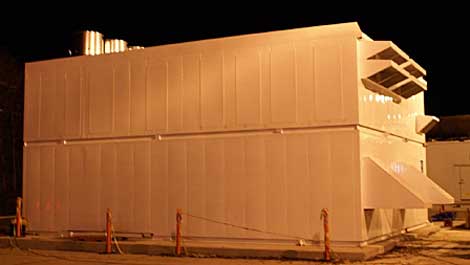
A look at the Amazon Perdix container, which is reportedly being used to deploy new data center capacity in Oregon.
Amazon Web Services announced today that it is now serving its data from servers in Oregon, where the company has been building several data centers. The new data center capacity has allowed Amazon to create a second availability zone in the US-West region, offering additional options for users to house and serve data across several geographic areas to improve redundancy and reliability. The new region will offer the full range AWS services, including its Elastic Compute Cloud (EC2) and Simple Storage Service (S3).
Amazon has deployed servers in remote areas of Oregon using its Perdix modular data center. Local media say AWS has deployed modules in Umatilla, Oregon. The company has submitted plans to build a similar facility with six modules in the Port of Morrow, and also has also resumed work at a site in Boardman, Oregon where the company bought land in 2008.
Amazon operates data centers in multiple regions, allowing users to add redundancy to their applications by hosting them in several regions. In a multi-region setup, when one region experiences performance problems, customers can shift workloads to an unaffected region. This allows customers to avoid having its cloud assets constitute a “single point of failure."
Industry analysts say recent outages at Amazon have prompted users to adjust how they approach cloud architectures. “End users now want to mandate that they have multi-cloud strategies,” said William Fellows, co-founder and Principal Analyst at The 451 Group.




